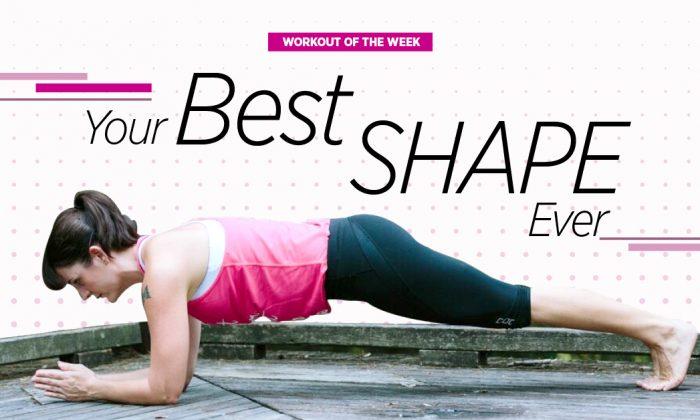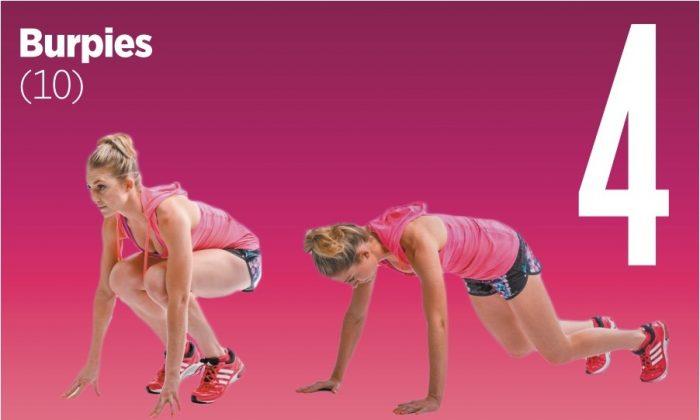Warming up your body before any kind of workout is important, but many people still don’t do it. Maybe they feel that the five or ten minutes they could spend warming up are better spent on their actual workout, or maybe they get bored warming up the same way every time.
Whatever the reason, leaving out a warmup all together can have a negative effect on your training session. In case you’re still in doubt, here are three great reasons to start every workout with a warmup done the right way.
1. A warmup will increase the circulation in your body, allowing oxygen to flow with ease to your muscles. Oxygen fuels your muscles, and good circulation means a steady source of fuel.
2. Warming up will increase your body temperature, and a warm body means less injury because the muscles, joints, and ligaments are at their most supple and are ready to move.
3. With your circulation and temperature elevated, your muscles will be ready to function at their optimum, so your overall performance—whether it be squatting, sprinting, or lifting—will improve with the right warmup
Static and Moving Stretches
Stretches are categorized as either static or dynamic.
Static refers to stretches that are not moving, so you hold the position in a still manner for a certain period of time. Static stretches are great at the end of your workout, as they let your muscles know that you are slowing down. They also help to lengthen the muscles, which helps reduce post-workout soreness.
The stretches below are all dynamic stretches, which means you are moving while stretching. Research shows dynamic stretches are better than static stretches for warming up the body, so a good rule of thumb is do dynamic stretches to warm up and static stretches to cool down

Dynamic stretches are a great way to warm up your body. Willis Lim Photographer Brisbane Australia

Dynamic stretches are a great way to warm up your body. Willis Lim Photographer Brisbane Australia
Leg Swing
This movement will warm up your leg muscles and the front and back of your hips into the glute area. It almost replicates the forward-back movement your leg makes when you run, making it a great functional warmup movement.
1. Lift one foot slightly off the floor with the weight transferring to the opposite leg.
2. Swing the lifted leg in front of your body and then behind, keeping the leg relaxed. Swing from the top of your thigh where it connects to your hip.
3. Do five leg swings on each leg.

Dynamic stretches are a great way to warm up your body. Willis Lim Photographer Brisbane Australia

Dynamic stretches are a great way to warm up your body. Willis Lim Photographer Brisbane Australia
Body Circle
This movement is designed to warm up your lower back, the sides of your torso, and your inner thighs.
1. Stand with your feet wide apart and your hands clasped above your head.
2. Start to trace a large circle in the air with your fingertips, bending your upper body forward so your hands sweep in front of your feet. Continue the circle until you are back at your starting position.
3. Repeat the circle three times in each direction.

Dynamic stretches are a great way to warm up your body. Willis Lim Photographer Brisbane Australia
Hip Rotations
Due to the nature of our increasingly seated and sedentary lifestyles, our hips, along with our lower backs, start to shorten and tighten. This causes tension, which can lead to pain. It also causes weakness, which leads to imbalances in the body. This dynamic movement will help improve the movement in your hip area.
1. Start with your feet hip-width apart.
2. Lift your right foot off the floor by bending and picking your knee up toward your body. Your thigh should be parallel to the floor.
3. Rotate your thigh to the side of your body (as far as is comfortable). Touch your foot on the floor lightly. Then pick it up and bring it back toward your body to return to the start position.
4. Do five hip rotations on each side.

Dynamic stretches are a great way to warm up your body. Willis Lim Photographer Brisbane Australia
Arm Swing
Our shoulder joints are capable of the greatest range of movement of any joint in our body and are also the least attached. This means the ligaments and muscles supporting our shoulder movements are small, and unless strengthened, are often weak. This movement will help to gently loosen the ligaments and muscles at the front and rear of the shoulder and upper arm.
1. Start with both arms relaxed, hanging by your sides.
2. Swing one arm forward and the other back until they reach ear level.
3. Swing the two back and forth simultaneously.
Emma-Kate Stampton certifies Pilates instructors and is a certified personal trainer. With nine years of industry experience, she is passionate about sharing the gift of health and well-being. Emma-Kate is based in Brisbane, Australia.




